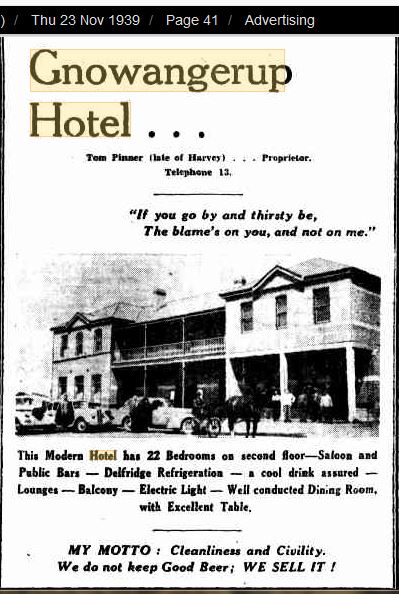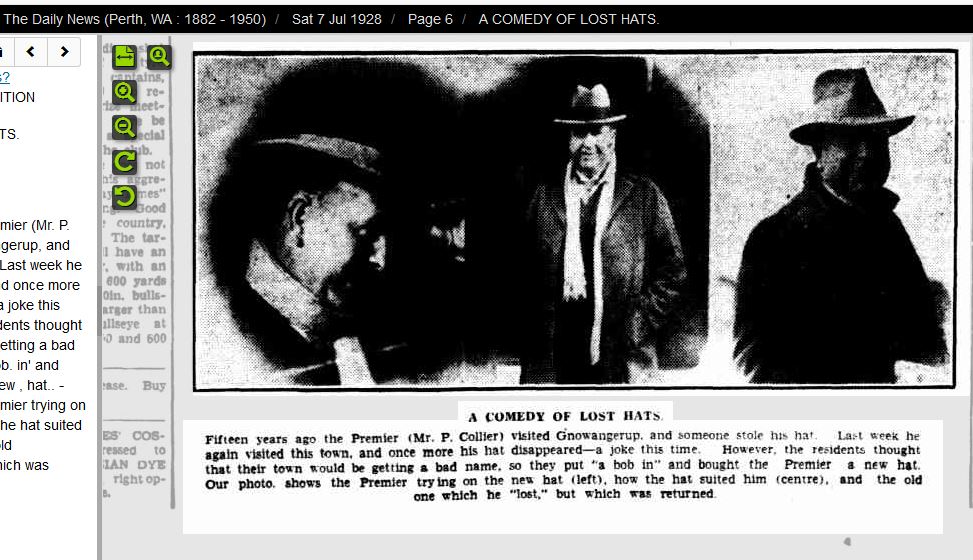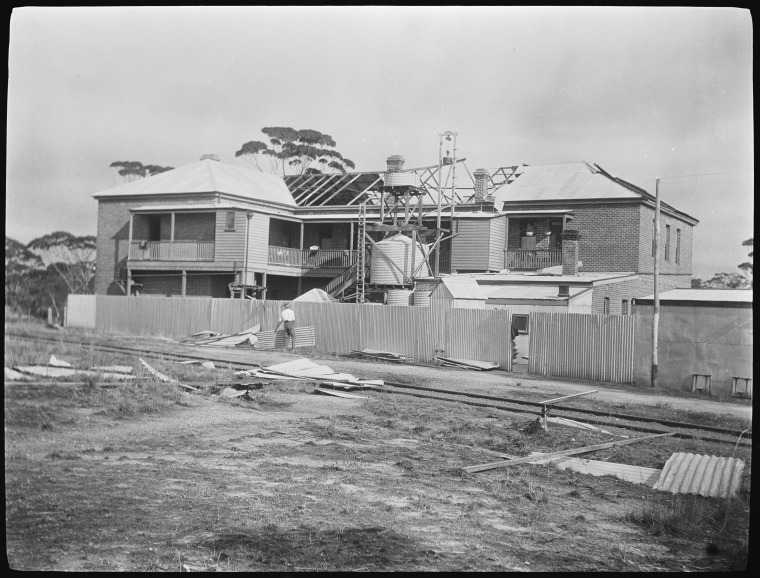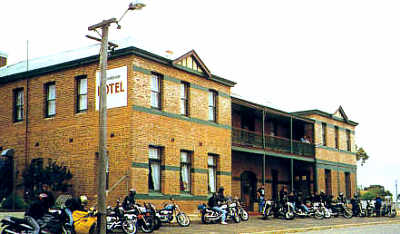Gnowangerup CRC
Railway est. 1912
As early as 1906 the Gnowangerup Progress Association (GPA) began pushing for the construction of a railway line from the Great Southern Line at Broomehill. In 1907, it was decided to bring the line in from Tambellup. However, due to Western Australia’s rapidly expanding railway system at the time, the town still had to wait until 1909 before survey work on the line began.
Initially the railway station was surveyed to be 4 km south of the township. Arthur Hugh Allardyce recalled that- 'the Progress Association requested it be re-surveyed, to the southern side of the town, (near the present-day Sporting Complex). A small delegation travelled to the surveyor's tent where he was camped, and strongly urged him to re-consider his decision. The surveyor, who appeared annoyed-said, in effect " So, you want the railway through your townsite, do you? Alright I'll put it through town for you!" So he re-surveyed it through the middle of town, dividing town blocks and crossing the main street!'
The first train arrived in Gnowangerup at 1.30pm on 1 July 1912 carrying 24 passengers. From this time on a train arrived carrying both passengers and goods, every Monday and Thursday.
Gnowangerup local Pearl Marshall recalled ‘At the completion of the work, the townsfolk, as a token of appreciation to the workers, decided to hold a ball. Every effort was made to make this a night to remember. To save embarrassment to the workers who were unlikely to own any formal clothes, it was decided to dress informally. However, the workers, who came from all walks of life, thought that if these people were being so kind, they had better do their best. So those who did not have an evening suit with waist coat and white gloves, hired or borrowed them. You can imagine the surprise of everyone at the Ball. After a time, everyone saw the funny side and had a very enjoyable evening.’(Pearl Marshall, pg. 18)
Although it would be a few more years before the passenger and goods train would stop running to Gnowangerup, in 1958 the service from Gnowangerup to Borden and Ongerup was discontinued. This meant that the train stopped at the station site and no longer crossed the main street, much to the delight of local residents! The rails were completely removed from the main street and the land was returned to town lots.
Memorial Hall est.1923
A Returned Serviceman’s League was formed in Gnowangerup after World War I and its members were active supporters of the town’s fundraising efforts to build a fitting memorial to the men of the district who had lost their lives serving in the War. After much deliberation it was decided that a large public hall should be built as the soldiers’ memorial. Architect George Herbert Parry designed the building and the project was begun with a loan of ₤2000 from Mr Andrew Moir.
In February 1923, the foundation stone was laid by Mr Michael Corbett. The hall was built by Perth builder, Mr Cresswell, at a cost of ₤3003. Local stone was used in the construction of the hall which took six months to build and was opened in August 1923 by the Governor, Sir Frances Newdegate, who was escorted to the hall by an honour guard of seven former members of the 10th Light Horse Regiment, and the ‘Last Post’ was sounded by Arthur Dawson. Two children, tiny Margot Davies and Edward House were to present Lady Newdegate with a bouquet. At the last moment Edward 'jacked up' but Margot proceeded undaunted. Edward was later to grow out of such shyness and entered state parliament.
From 1929, movies were held twice weekly in the Memorial Hall. The projector room was located immediately above the main entrance, and accessed from outside the hall by climbing a wooden staircase. Prior to being shown in the Memorial Hall, movies were shown outdoors on a vacant block before re-locating to the Agricultural Hall, and then to another outdoor location on a vacant block next to Gnowangerup Hardware.
The hall had a supper room and kitchen on the left-hand side. The stage was extended to accommodate change rooms. A Repertory group was formed in 1930 and they used the hall as their base. When the hall was built, the front room on the left-hand side was set up as the RSL room.
Prior to 1942, the room on the right-hand side of the main entrance to the hall was the Gnowangerup Roads Board office. After the Roads Board moved to the current site, the Town Library remained in the building until the present library was built. ANZAC services were first held in the hall before the War Memorial was built.
The Hall has been used extensively for movies, dances, cabarets, live performances, for a variety of entertainers and travelling musicians, Rotary, Agricultural Show and Miss WA Entrants Balls, Sporting Club dinners, meetings, fashion parades, dance lessons, exhibitions, badminton, volleyball, school concerts, exhibitions and weddings.
Post Office est. 1918
Most of the early settlers in the Gnowangerup district had to travel between six and ten miles to collect their mail from Clearhills farm, which came only once a fortnight. This was satisfactory whilst there were only a few settlers in the area, but as the district and township grew it became necessary for Gnowangerup to be included in the mail route.
From 1910 a postal service was operated out of Richardson’s general store by the manager, Mr J. E. Rowe. (Richardson’s was located further down the street, on the corner where the I.G.A is situated) The Gnowangerup Progress Association (GPA) began agitating for better postal amenities in 1912. During a visit of the Acting Premier in March 1910, a public meeting was held in Mr McDonald’s machinery shed and one of the matters brought up for discussion was the provision of postal facilities for the district. One of the complaints was that the postal authorities were purposely keeping the 'allowance' post office short of stamps. At the meeting it was stated that:
It frequently happens that for a week at a time not a stamp or postal note can be procured. This presents a serious hindrance to business, and also prevents the post office from earning the required revenue that would enable settlers to ask for the erection of an official post office.
Eventually the Post Master General yielded and in July 1913 the editor of the local newspaper reported:
Much satisfaction is felt at the appointment of a postmaster – Mr Broom having arrived to take up the appointment. Until a more permanent place can be built the postmaster will take up the premises lately occupied by the National Bank.
These premises, known locally as the Tin Shed, had been built by Richardson & Co. as an office for the store manager however it soon proved to be cramped, inconvenient, unbearably hot in summer and bitterly cold in winter.
The Post Office, at the current site, opened on 25 June 1918 with Postmaster Mr H. T. Williams in charge and Ron White as the messenger. With an ever-increasing number of settlers and amount of postal business, the people of Gnowangerup began to lobby for a more suitable building. On 15 March 1917, a wire was received from the Premier, Sir John Forrest, which read:
Re: Gnowangerup Post Office. Have had matter before Minister for Works, who has authorized erection of building and has instructed that it be put in hand at once.
The current building was built in 1918 by J. J. Hewitt and originally had a she-oak shingle roof. In 1948, additions were made to the original building including the installation of a telephone exchange and the replacement of the shingle roof with tiles. The telephone exchange operated until 1972 when it was replaced by an automated system.
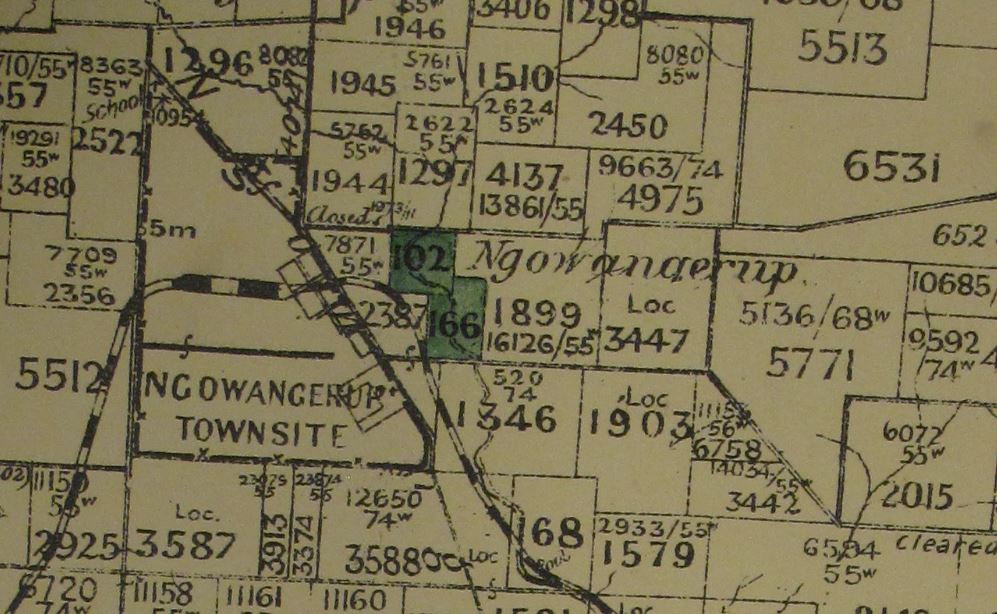
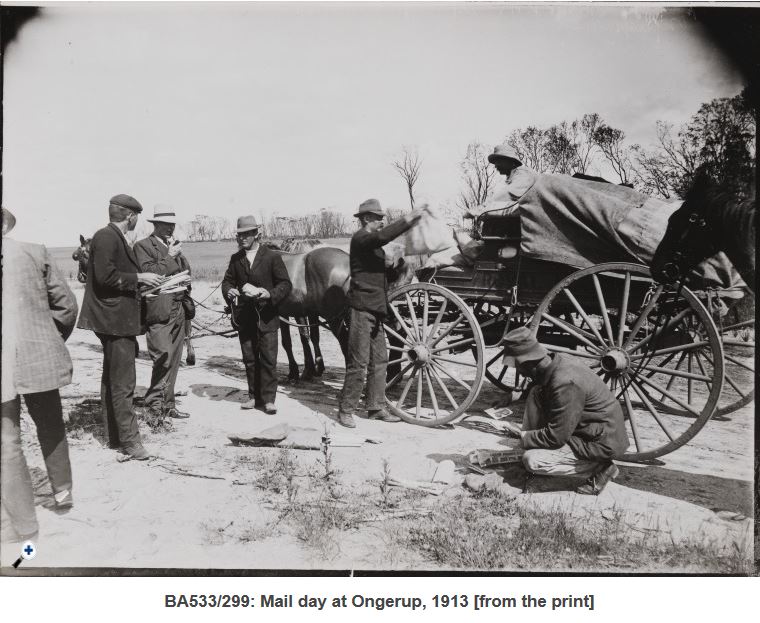
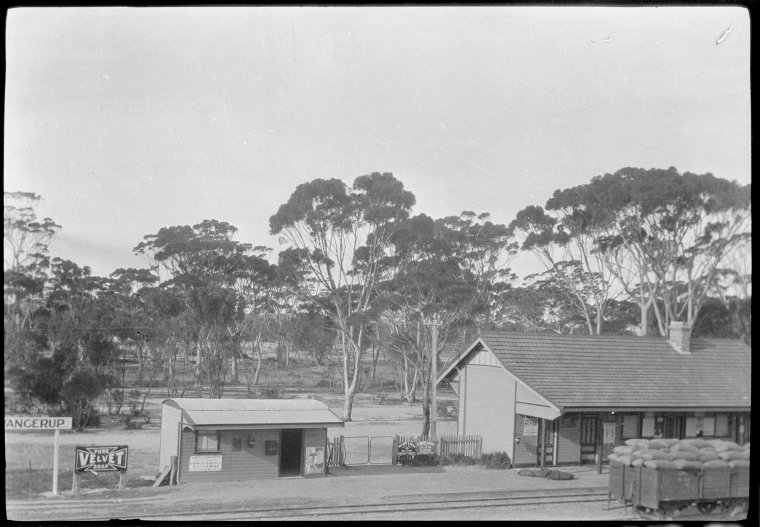
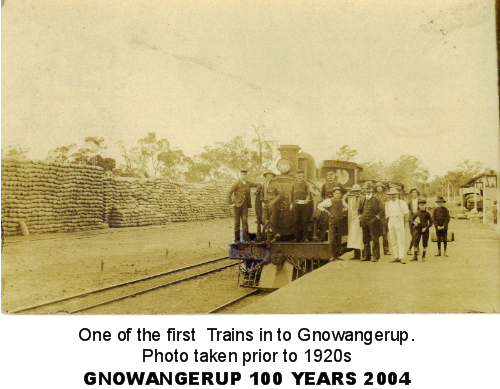
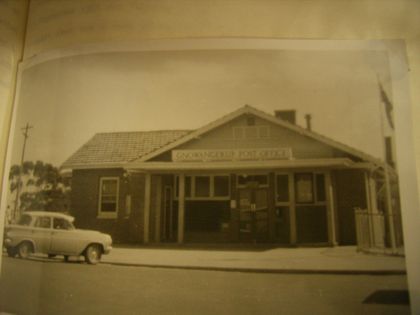

Agricultural Hall Storyboard
Agricultural Hall est. 1910
As the numbers of pioneers increased, the need for a public meeting and entertainment facility became pressing. The Gnowangerup Progress Association began fundraising in the hope that the Government would assist them in building a public hall. In October 1909, the GPA accepted an offer put to them by Mr Michael Corbett to advance the money for building the Agricultural Hall. Plans and specifications from Perth architects Cavanagh & Parry were accepted, 40,000 bricks were made and the builder F. L. Kleeman of Katanning began construction on 28 March 1910 for a cost of ₤305. The hall was officially opened on the 20thJuly 1910 by Arnold Piesse, MLA.
The Agricultural Hall was the scene of many spirited meetings and of many pleasant social occasions. When balls were held everyone from miles around came, in buggies, buck-boards, spring carts and on horseback. Dancers wore their best boots, sand was put on the floor, and babies parked in dress baskets under the seats around the walls. A concertina and the babies provided music for the Quadrilles, Alberts, Barn Dances, Polkas etc. Dust from the sanded floor rose in a cloud, and a good time was had by all.
Pearl Marshall recalled that ‘the different denominations took it in turn to hold services there. The ministers used to travel over from Tambellup by horse and sulky, or buggy, and stay overnight.’ In 1915, the wedding of Miss Lottie Annie Alymore and Mr Albert Ernest Coles was held in the hall. The wedding with its 150 guests was reported by the Gnowangerup Star as “the largest wedding ever held at this new centre”.
In 1923 the new Memorial Hall was built. The Freemasons acquired the Agricultural Hall in 1924, converting it for their own use
34 Alymore St, Gnowangerup WA 6335, Australia.
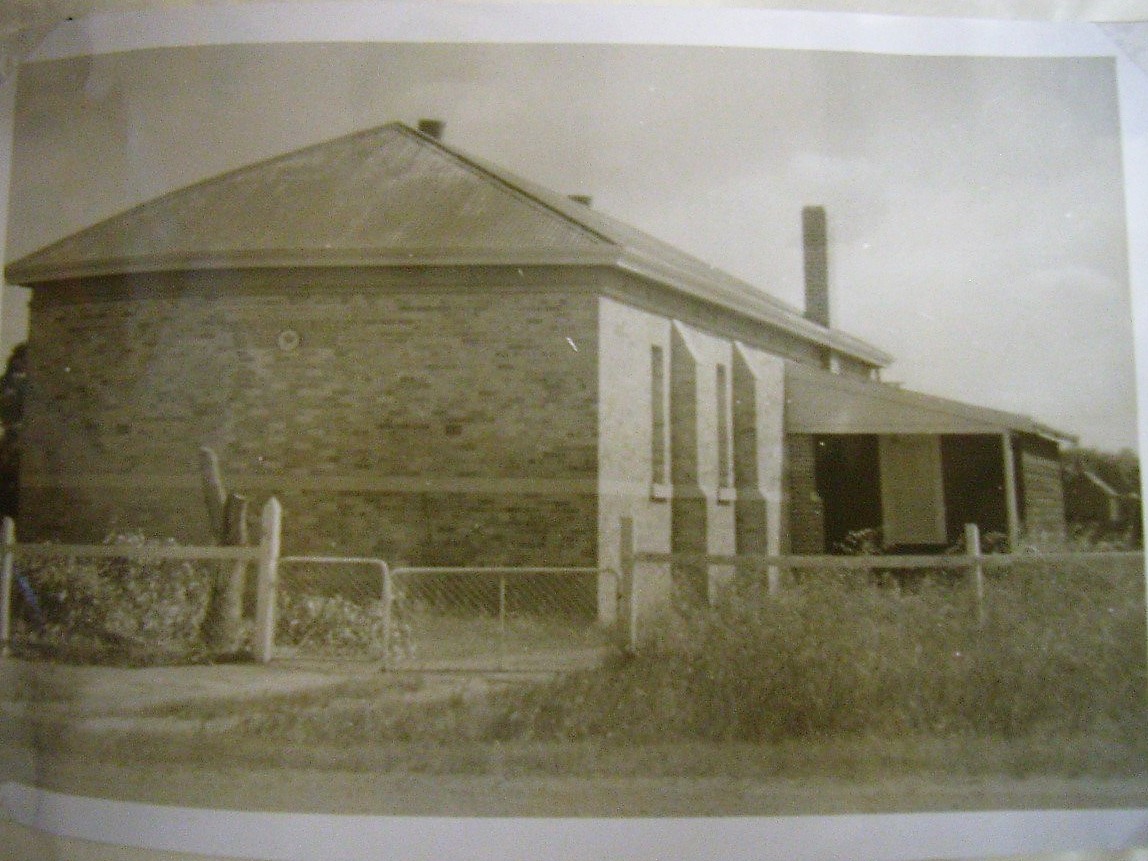
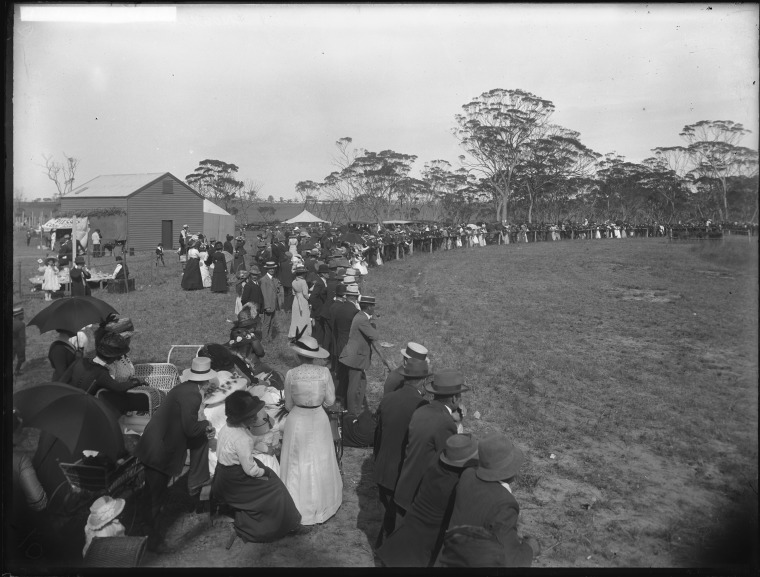
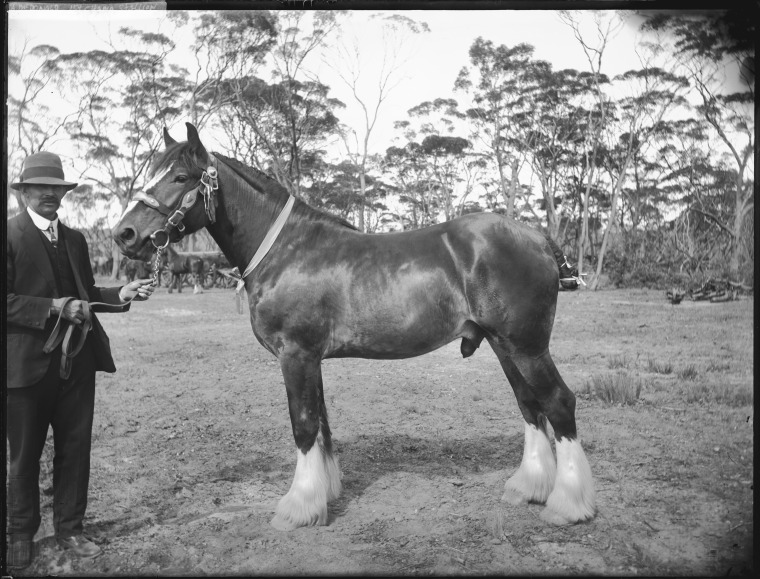
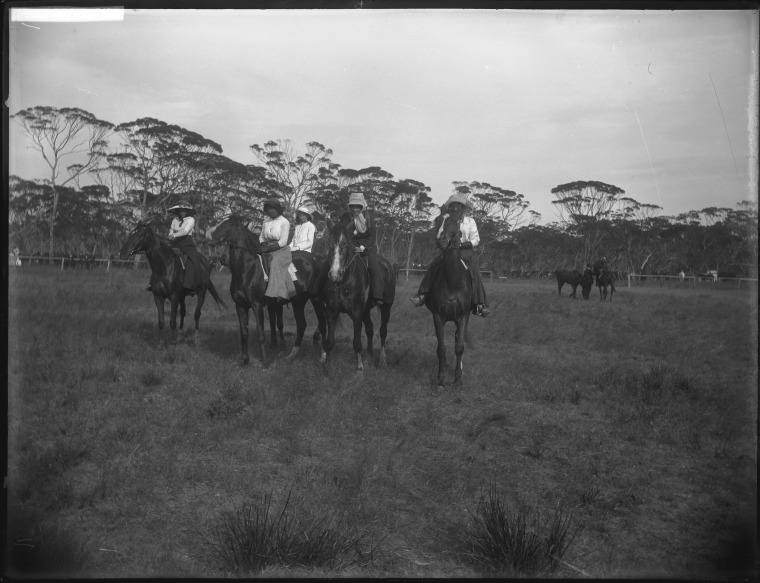
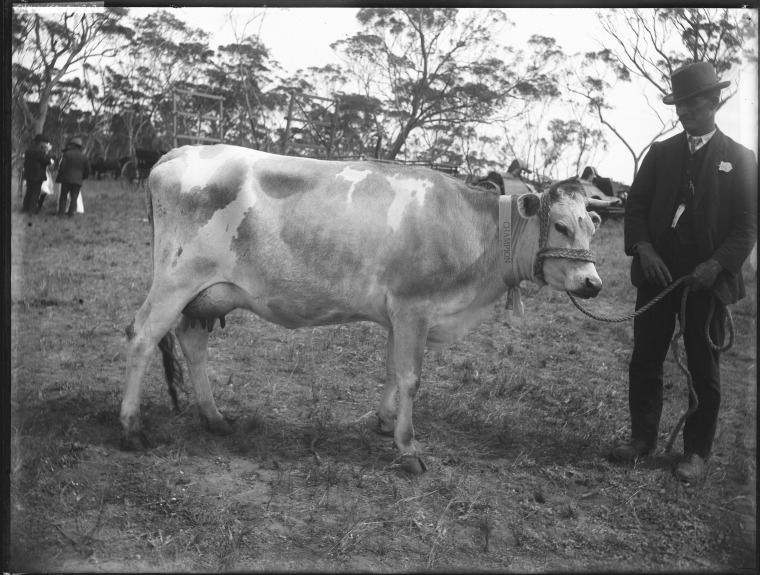
Gnowangerup Noongar Heritage Museum Storyboard
Gnowangerup Noongar Heritage Museum est. 1913 (storyboard sign)
This is one of the oldest remaining houses in Gnowangerup and a fine example of the style of housing built in the town in the earliest period of settlement. The house was constructed as a residence for the Baptist Minister Edward Clugson. The bricks were locally made.
In 1919, after Minister Clugston resigned and left the district, it became the residence of Alfred Strachan, who had a tailor’s shop in Yougenup Road. It was leased to Jack Moran in the 1920s who operated a boarding service from the house.
From the late 1920s until 1972, the house became the home for George Hendry, owner of the former Hendry’s Store in Yougenup Road. Throughout the Hendry’s ownership and occupation of the house the front verandah retained its original bullnose roof, which was painted red, as was the corrugated iron roof to the house. During World War Two, an underground bunker was built at the western side of the Hendry’s residence for shelter in the event of air raids!
In 1973, it became an aboriginal youth centre, called the Gnowangerup Noongar Centre, established by the New Era Aboriginal Fellowship which aimed to help young Aboriginal students with their school work and recreational activities. The provision of such services specifically for Aboriginal people, with staff who included Aboriginal people, and delivered from such a venue was breaking new ground in Western Australia in the 1970s. This service continued until 1989, when the operations and focus were essentially relocated into the hall building constructed next door.
Left vacant for several years and subsequently vandalized, a demolition order was placed on the house in 1994. The local community was disappointed and saddened at the impending demise of such an important part of the town’s early heritage and a plan to convert it into a Noongar and Pioneers museum was proposed. Although this proposal eventually lapsed, in 1995 a grant from the Lotteries Commission was received to carry out conservation works. In 2003 the Gnowangerup Aboriginal Corporation obtained a grant from the Department of Indigenous Affairs to assist with establishing a Heritage Museum and Keeping Place. The building is now an impressive museum that can be enjoyed by all ages!
Police House and Jail est. 1913 (brass plaque)
Illicit grog selling and bookmaking at the annual town picnic was cause for concern and the Progress Association asked the Broomehill Roads Board if they had any power to appoint Mr C. E. Stutley as a Special Constable for the district in 1909. On 16 June 1911, James Bell as Hon. Secretary of the Gnowangerup Progress Association wrote to the Commissioner of Police requesting that an officer be placed in the rapidly growing district of Gnowangerup and emphasized that the central location of the town along the new railway that was to be built from Tambellup to Ongerup would make it an “excellent site for a Police Station”.
Just under a year later, the first Police Station was established on 8 June 1912, which was a makeshift canvas covered structure erected on this site by Police Constable McArthur. His area of duty extended to Jerramungup, and he and his wife were expected to supply meals for the prisoners.Prisoners were secured by chain to a large Morrel tree by the stables that were located towards the west end of the block.
'A contract clearer was arrested for being drunk and disorderly and chained to the weighty log. Next morning, to the constable's great surprise, both man and log were missing. He found his man standing in front of the hotel with the log balanced on his shoulder!!! '(A.H.Allardyce p.10)
Gnowangerup's second constable was Jeremiah John Jones. A.H Allardyce recalls a conversation with him where they both established that they came from the same area in Victoria. He went on to tell him he knew Euroa well, and went on to discuss Ned Kelly and the Kelly gang at the time the Kelly gang weresurroundedin the Glenrowan Hotel by the police, who were threatening to burn the hotel down. At this stage Constable Jonesbecame all attention, and for the first time broke in on the conversation. He asked me if I remembered hearing that the hotel proprietress- Mrs Jones, who appeared at the windows with a baby in her arms, so as to show the police that a innocent baby would suffer if they set fire to it? "Yes, I heard of that" I said. "Well", said Constable Jones, "I was that baby"!!
Constable Jones wife Evelyn (maiden name Holloway) was also born in Glenrowan, and her half-sisters husband, Thomas Curnow, was the one whostopped the train carrying the police to Glenrowan.
In June 1959, the Gnowangerup District Roads Board wrote to the Hon. C. C. Perkins, MLA, Minister for Police, expressing concerns after they had been informed that Gnowangerup was to become a three-man Police Station with a Sergeant in Charge:
“Consolidation of settlement and natural increase, together with the recent War Service and Civilian Land Settlement has raised the district population from a few hundred persons, when the station was erected over 40 years ago, to over 3,000. The result is that both the Police Station and the Court House are completely inadequate for present day needs, the position will become more aggravated when additional land settlement farms are released. The Board recommends that consideration be given to the provision of a new Court House and Police Station, and that same be erected on a new site away from the School Grounds.”
In July 1959, Sergeant Ball from Gnowangerup was requested by the District Inspector to report on the situation. He reported as follows:
I respectfully report that the Police Station, office and Court House at Gnowangerup consists of one room measuring 14 feet by 12 feet, built of weather board with iron roof. Adjoining the Police Station are two cells and an exercise yard also built of weather board with iron roof. When there are any prisoners in the cells any conversation which takes place in the Police Station can be heard by them. The population of this district is approximately 3,200 whites and between 350 to 400 natives.The population is steadily increasing. The present position of having only one room which has to serve as a Police Station, Court House and general office is not satisfactory especially when prisoners are brought to the Police Station and members of the general public are receiving attention by the Police. The Police Station and lockup is adjacent to the Gnowangerup High School Ground and is in clear view of children attending this school. The erection of a new Police Station at Gnowangerup would improve the present cramped working conditions and provide a better service to the public.
Water was not connected to the lock-up jail which Sgt Ball described as “very unsatisfactory especially when sentenced prisoners serve their term of imprisonment at this centre, there being no washing facilities provided”.
By 1962 it was recognized that the old police station and court room were inadequate and then Minister for Police, J. F. Craig, MLA, placed the building of a new police station, court, lock-up and quarters on the Loan Works in1962-63. The old police quarters were retained as a residence for the Car Constable until the late 1970s.
The buildings are currently being lovingly restored by the Gnowangerup Heritage Group!
7 Alymore St, Gnowangerup WA 6335, Australia
Noborach Playground Storyboard
Bank of Australasia est. 1915 (brass plaque)
The Bank of Australasia began operating in Gnowangerup in 1910 at this site but in much less salubrious accommodation of a tin shed. So keen were the banks to get to the new and growing town that the managers had neither houses in which to live nor premises in which to operate.
The early bank managers were Chas. Reid 1910-17, R.J. Butler 1917-30, then F. McKnight from 1930- c. 1943. The first two accounts opened were for Mrs Violet Harvey, the first teacher at the school and Mr Edward Alymore. The new premises were built in 1915 and a manager’s residence was included at the rear of the bank building. The tin shed was purchased by the Gnowangerup Roads Board and relocated to their block for use as their offices.
Newsagency est.1911 (brass plaque)
The Gnowangerup Newsagency has operated from this building continuously since 1911, imagine the newspaper headlines that it has sold! Originally operated by Norman Freak as a tobacconist, newsagency, billiards room and hairdressers. He was also Captain and Secretary of Gnowangerup's first Australian rules football club.
In days gone by the shop was much smaller and behind this, through a door always obscured with thick clouds of issuing cigarette smoke, was the billiards room where the district men loved to gather. The old men would sit around the walls and talk while the more active would be engaged in billiards at the very large table.Women were not welcome of course!
Cash Store and Chemist est. 1920 (brass plaque)
Originally two shops,one being the first pharmacy in Gnowangerup run by Mr I. G. Royal and Mr N. B. Drummond and the other was Mrs Maggie Smith’s general store known as Smith’s Cash Store. Mr Drummond was said to have been an awe-inspiring man, over 6 feet tall with serious, penetrating eyes and a long aristocratic nose. The railway line actually ran across the main street on the left of this building-evidenced by the angle of that wall!
Elders Smith & Co Ltd. est. 1925 (brass plaque)
Elder, Shenton & Co opened for business in 1911 by Roland B. Davies and conducted the first stock sale in the district in 1913.R.B Davies married his Perth born wife Ethel in 1911 and a handful of locals gave the newlyweds a 'tin kettling'.Mrs Davies, who had never heard of such a custom, was greatly alarmed when the racket began.
While Elder, Smith & Co. Ltd built this present building in 1925 they used only a small portion, and the Lyric Tea Rooms, Bennett’s Garage and George Crisp’s Hairdressing Salon also operated from the shops within the building. N. P. Davis also owned the premises at one stage. Since then the building has been modified to open up the inside to form one store. A lady’s fashion store, run by Faye Symes and Helen Harris also occupied a section of the building until 1983.
Pearl Marshall recalled 'the Lyric Tea Rooms were open three days a week to serve lunch and afternoon tea, all proceeds going to the war effort – all volunteers. During the war the tea rooms operated on a roster system of district ladies who served lunch, morning and afternoon tea and also sold second hand books, magazines and toys. It was from here that came my little boxed set of 5 Shirley Temple Books and a colour photo showing her famous golden curls… I always remember the day when Mrs Hams from Tambellup carried in an enormous green enamel wash bowl filled with strawberries in jelly. I didn’t think so much jelly and so many strawberries existed in the world.’
Elders GM relocated to Corbett street in the 1990’s. A decline in clientele and closure of branches meant after over 100 years of service to the Gnowangerup community the Elders branch closed its doors in September 2013.
Alymore St, Gnowangerup WA 6335, Australia
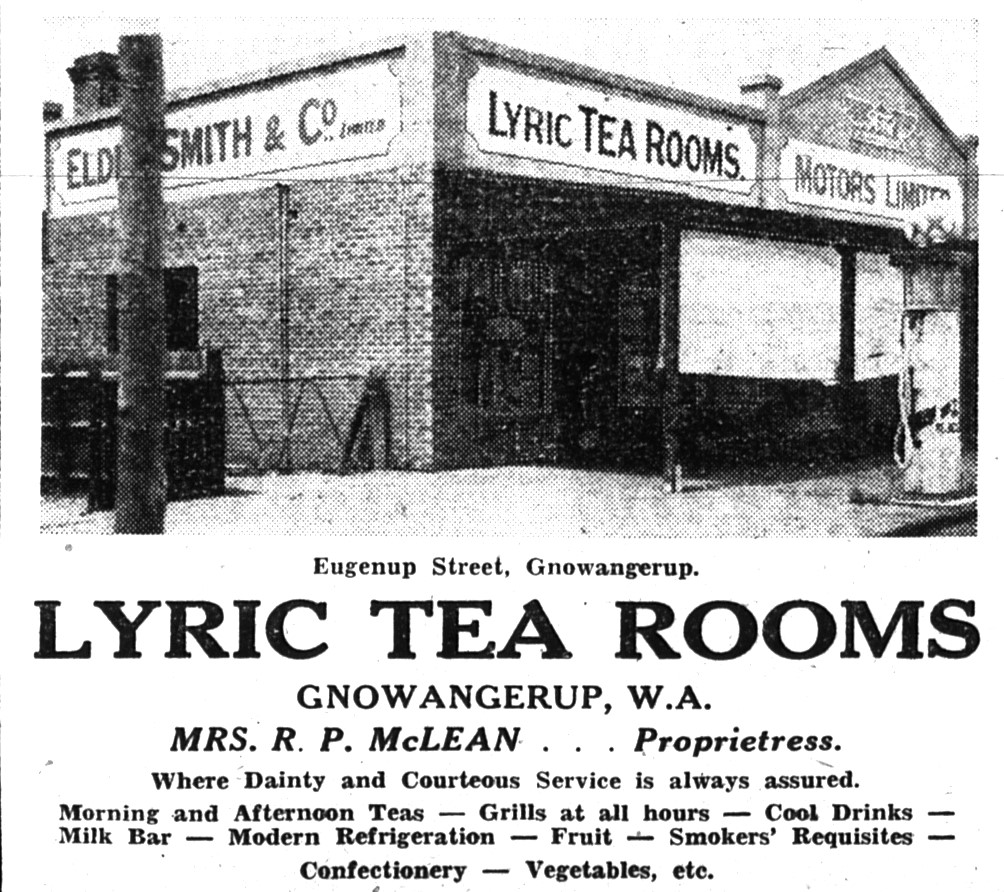
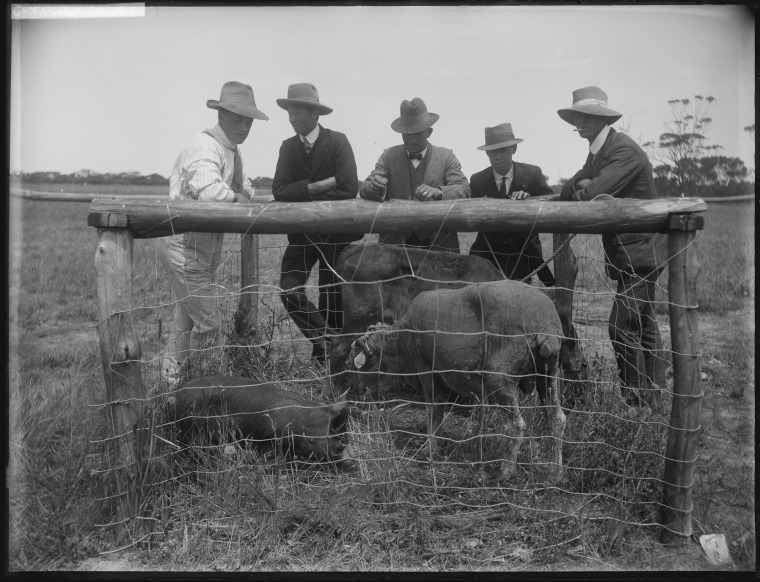
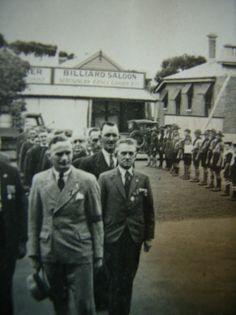
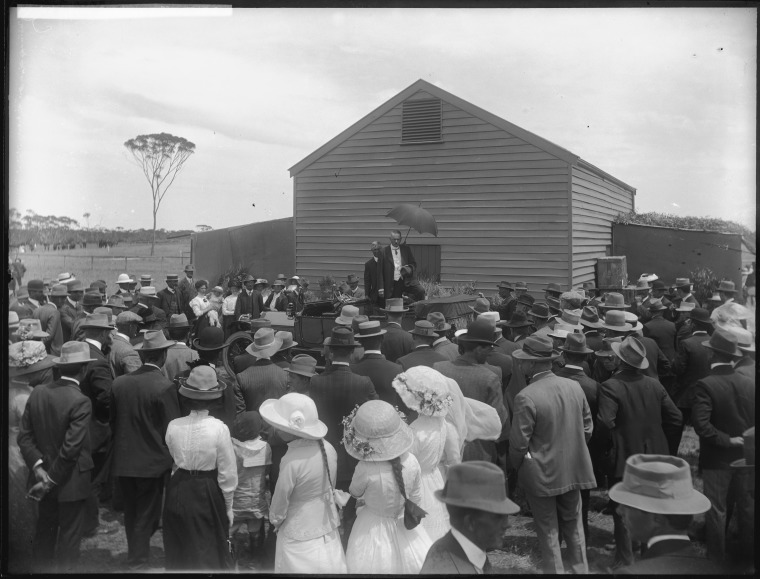
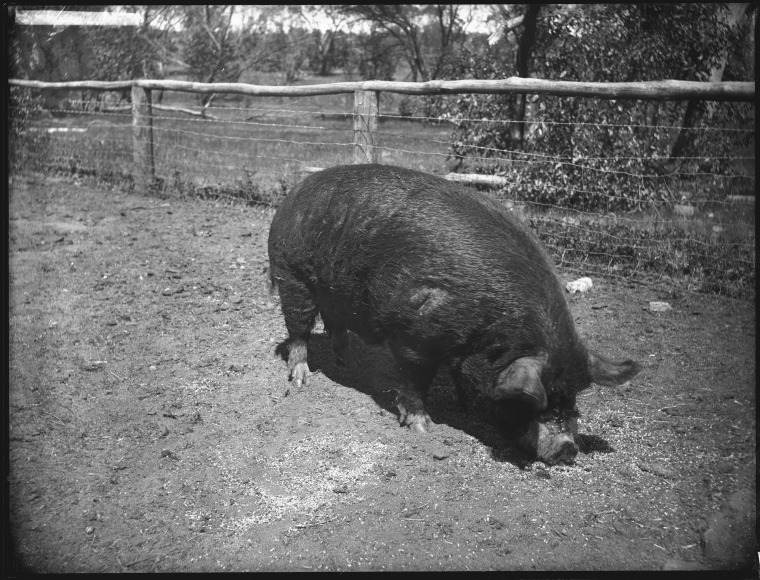
Shire Offices Storyboard
Shire of Gnowangerup Offices est. 1929 (storyboard)
The site of the present Fowler Steam Ploughing Engine was formerly the Coffee Palace, run by Mrs Head from the early 1900s until 1926, then Mrs Denham for a short periodafter which the Gnowangerup District Co-operative Co. Ltd leased the property.
The Bank of N.S.W. opened in Gnowangerup in 1928 and leased the former Coffee Palace for a period, until construction of their new premises, complete with managers residence, was finished on the adjacent block in 1929.Times were not prosperous, and while still struggling to build up clientele, the Bank had to withstand the depression years of the 1930s. Ten years later (1943) the premises were acquired for £2010 by the Road Board as Board Offices and Secretary’s residence.
When originally surveyed in 1904, Gnowangerup was a townsite of the Broomehill Roads Board. The GPA applied for Roads Board status in 1909, but before this could be granted they had to be able to raise £200 per annum, a huge sum in those days. They also needed a signed community petition and permission from surrounding roads boards had to be obtained.
The Gnowangerup Roads Board was formed in 1912, and included in its boundaries were Gnowangerup, Borden, Ongerup, Salt River, Jerramungup, Needilup and Bremer Bay. The first Roads Board office, which was the original Bank of Australasia shed that they purchased in 1914,was relocated by James Garnett to a block on the western side of Yougenup Road. Later the Board had a room in the Memorial Hall as their office.
In 1961, the Roads Board became the Gnowangerup Shire Council. The building has had considerable additions but the early foundations of the original bank building still remain.
Fowler Steam Ploughing Engine
Date of Manufacture: 1889
Engine No: 5872
Built by John Fowler & Co. (Leeds) Ltd in Yorkshire England in 1889. A pair of these ploughing engines were imported into Albany W.A by Mr T.W Powell, chairman of the W.A Land Co, to plough on his estates at Albany and Martinup.These single cylinder steam ploughing engines were fitted with church valve, double speed ploughing gear(winches)andgovernors. The W.A Land Co was a privately owned company that built the Albany to Beverley railway in exchange for 3 million acres in land grants.
The engines operated by parking on opposite sides of a paddock and winching a large double-sided plough backwards and forwards between the engines. The plow was abandoned in Albany when they found the soils were to shallow for this type of operation.
In 1892 both engines were driven (at 5km/hour) around the western end of the Stirling Range by Milton Eastwood (Mr Powells manager) and his two brothers George and Joseph, to Martinup, where they carried out general work on the property until they were sold to private buyers around 1906.
In 1910 a deputation from the G.P.A requested government assistance in clearing Moort and malley scrub between Gnowangerup and Ongerup. In 1912 a new smaller engine was trialed at Formby Bros farm, 12km S/E of Gnowangerup. After the successful trial, both of Mr Powells older engines were purchased by the W.A Government and converted to clear land (scrub rolling) in the Gnowangerup and Ongerup districts. The winches mounted under the boilers were removed, push bars added, and the rear wheels were converted to inventor Frank Bottrills 'Bottrail' wheels, a group of flat plates 1.5mtr's long that rotated on the rear wheels to enable the engines to move over sandy ground. Behind the engines were towed old Cornish boilers that were able to clear a strip of land 20 metres wide and 3 kilometres long every hour, and halved the cost of clearing. By the outbreak of W.W.I, 11,200 acres had been cleared. Prior to this innovation the method of clearing scrubland was by axe or bullocks and horses pulling scrub rollers. The chance of injury to the animals was great.
This engine was last owned by Toby Carpenter of Ongerup, who loaned it to the Aylmore family at Kittys Well where it was used until it broke down. The pair of engines are the only known ploughing engines to be brought into W.A. The other engine (5873) survives and is in Albany.
John Fowler & Co. was a renowned manufacturer of steam ploughing engines, agricultural traction engines and locomotives. Much of the firm’s machinery was exported, and Australia was a major destination.
Frantom’s Butcher Shop est. 1924 (brass marker)
The original section was a photography studio run by R Farley. After MrF arley moved out, Albert Frantom moved in and made it his home. Frantom’s father-in-law, C. H. Stutley, saw the need for a butcher in town as meat was hard to obtain for the townsfolk. Stutley set about constructing a butcher’s shop using locally made bricks and originally with a bull-nose verandah.
A butcher's shop run by the Grocock family located across the road provided much friendly rivalry between the two businesses. Stutleys erected a sign over their shop saying "Stutley and Son" with the head of a bull painted in the centre of it. Not to be outdone, James Grocock erected a sign saying "Grocock and Daughter" with the head of a cow painted in the centre of it! (P.Marshall p.144).
When Albert Frantom took over the shop and he and his family of 16 children lived in the residence in the back rooms of the shop. Pearl Marshall recalled that 'MrsFrantom just loved babies and even with all her own children to feed she always welcomed their friends into the long kitchen. She was a great cook and her specialty was Rainbow Cake – Chocolate, green and pink with lashings of fresh cream between the layers'.
After Frantom's butchers shop closed Mrs Drygan ran a hairdresser’s salon from the premises for many years. It is now a private residence.
Cottage Hospital est. 1918 (brass plaque)
This house is one of three houses built at this end of Yougenup road by Charlie Parker for his family, and operated as a hospital between 1920 and 1935. It was the second hospital for Gnowangerup, but the first public hospital.
The hospital was administered by a Hospital Committee. Sister Pearl Hart ran the hospital for the first two years of operation with a staff of two: Mrs Farrell as cook-help and a probationary nurse. Dr Bateman, the second doctor in the district, was appointed in 1921, just after this hospital opened.
On first sight, Sister Hart was said to have been shocked at the primitive conditions of the hospital. The garden consisted of a few roses dwarfed by weeds two metres high, the bedside lockers were made of kerosene boxes on wooden legs, and the front room was reserved as the doctor’s surgery. With immense energy and goodwill, she took charge. Merle Bignall wrote
“Gnowangerup was a young community with many war brides having babies. During the two years Sister Hart conducted the hospital, 80 babies were born, with no losses. Many of the patients came from Pallinup and the new lands of Ongerup and Borden. Waiting mothers from the latter two districts often arrived some days before and were a great asset, theywould bustle around making jam and pickles from the produce donated to the hospital from the green fingers of the town” (pg. 225, Fruit of the Country)
Relations would often sit with seriously ill patients in order to give Sister Hart a few hours' sleep or to enable her to slip out to the laundry to wash the maternity linen. Sister Hart later married a local man, Reg Austin, and turned her considerable aptitude to working for the Gnowangerup community for over 50 years.
In 1921 and again in 1922, additions were made to the building. On the north side of the building was a four-bed wardand two two-bed wards constructed of weatherboard. However, by 1924, conditions had again become cramped. Although plans began at this time for the construction of a new hospital, this was not to come to fruition until 1935. The weatherboard wards were demolished in 1935 when the hospital was converted back to a private dwelling.
26 Yougenup Rd, Gnowangerup WA 6335, Australia
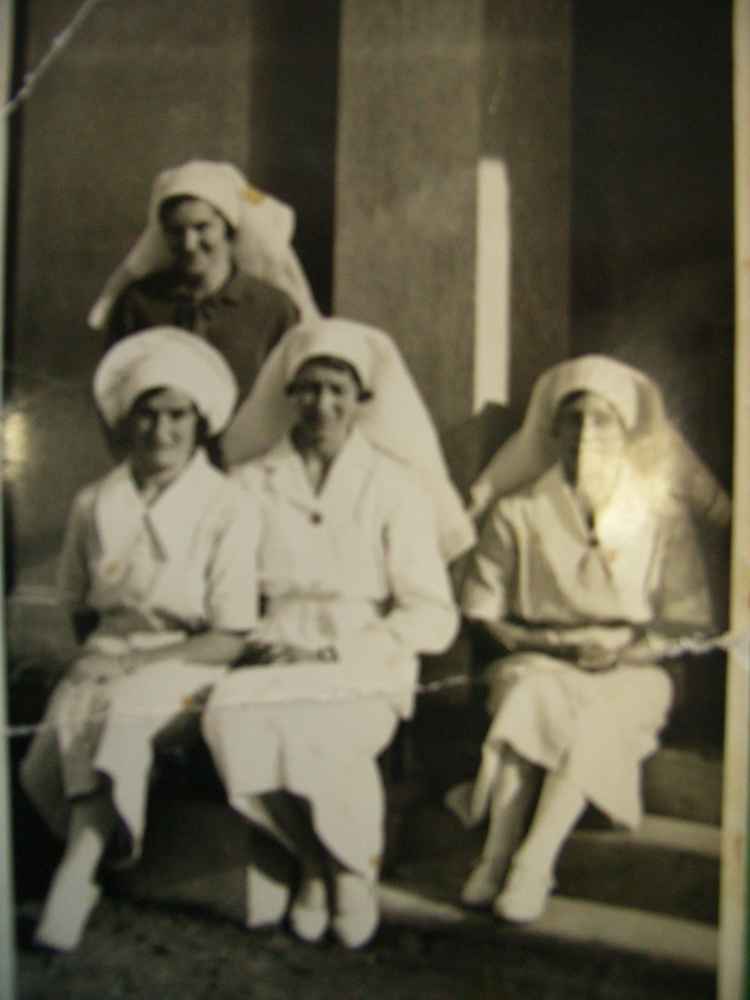
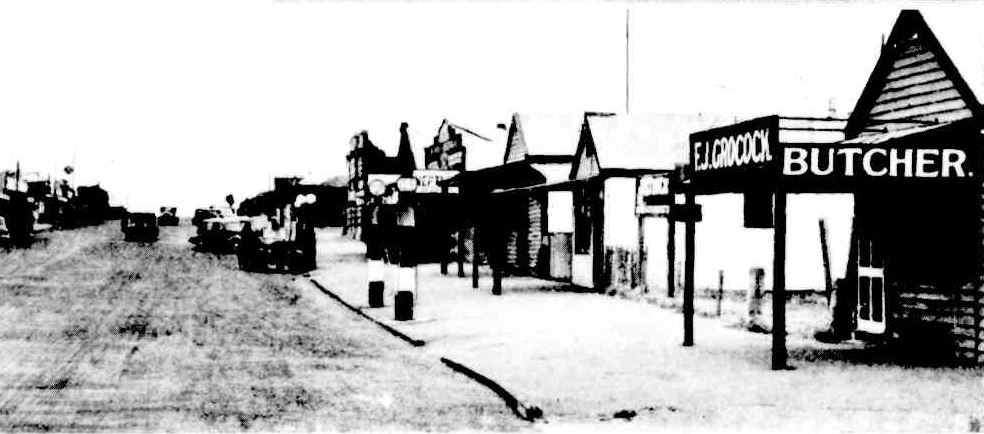
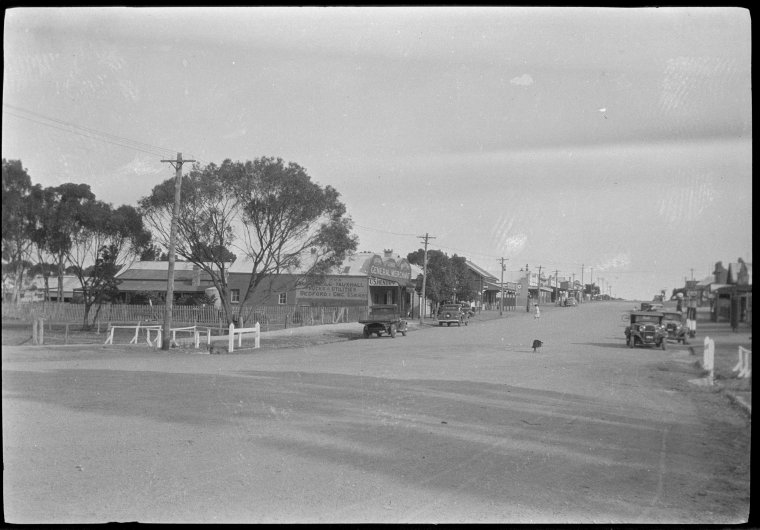
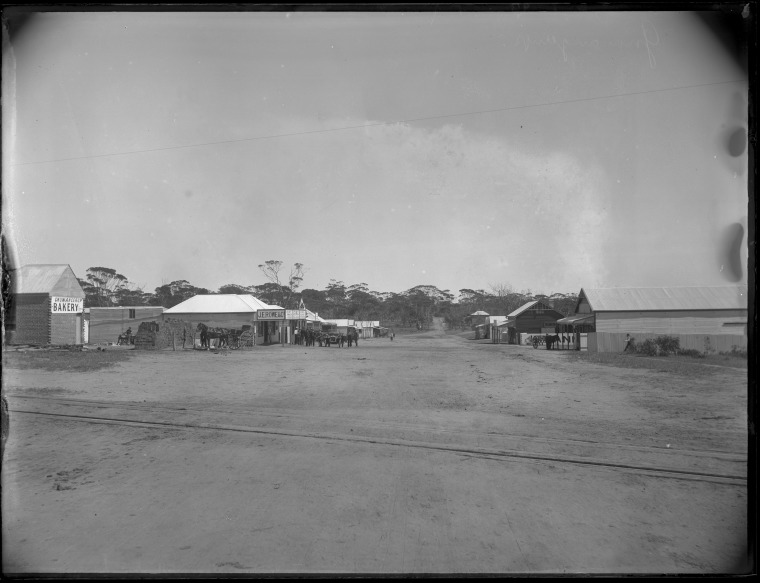
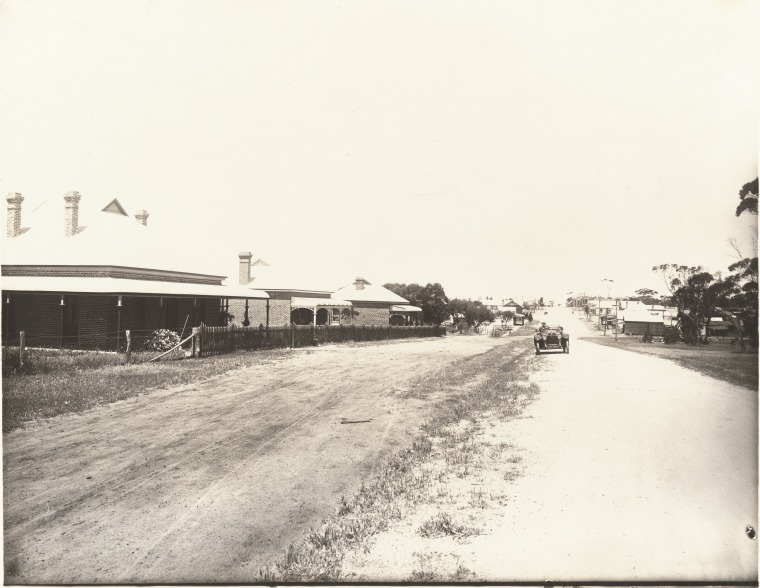
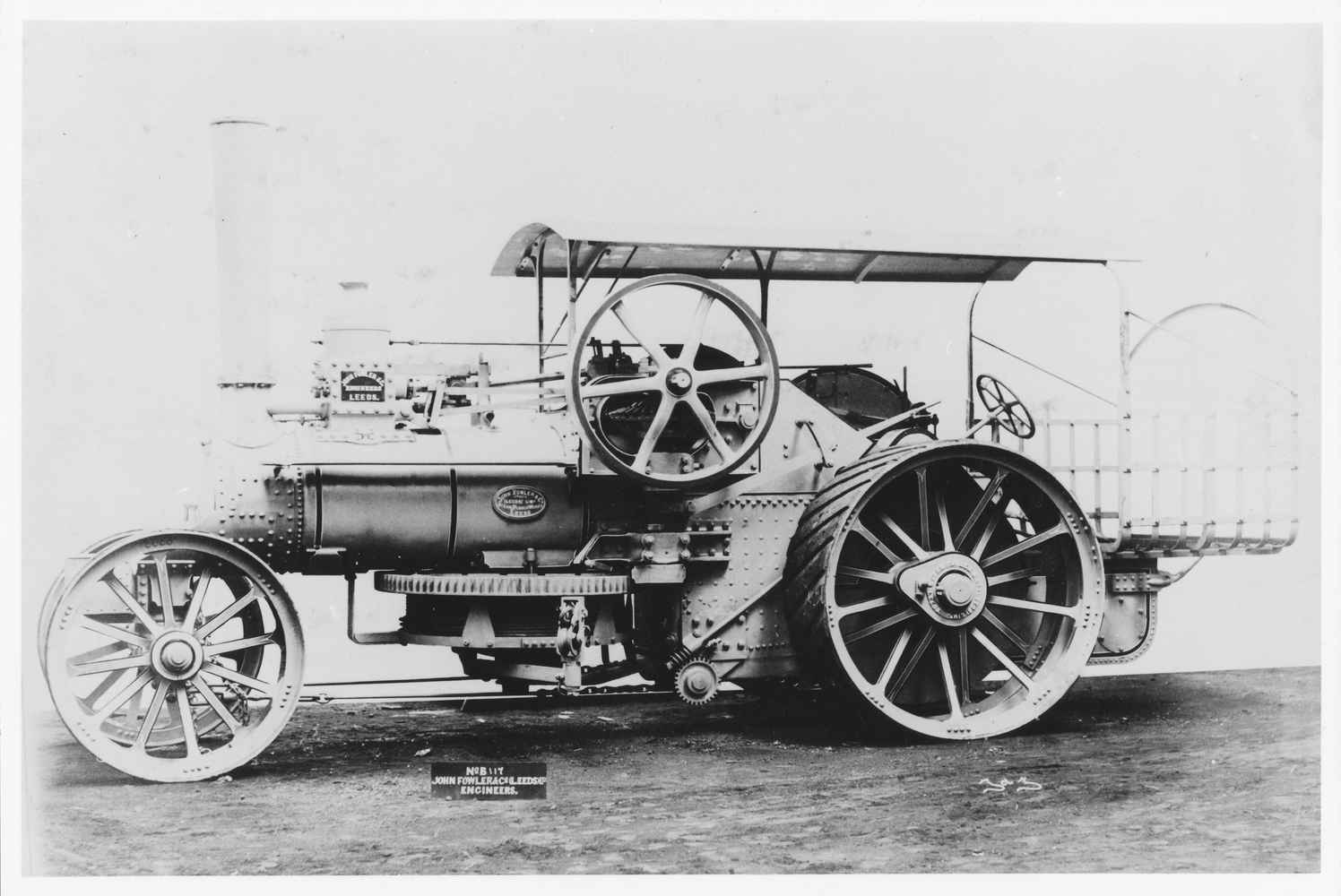
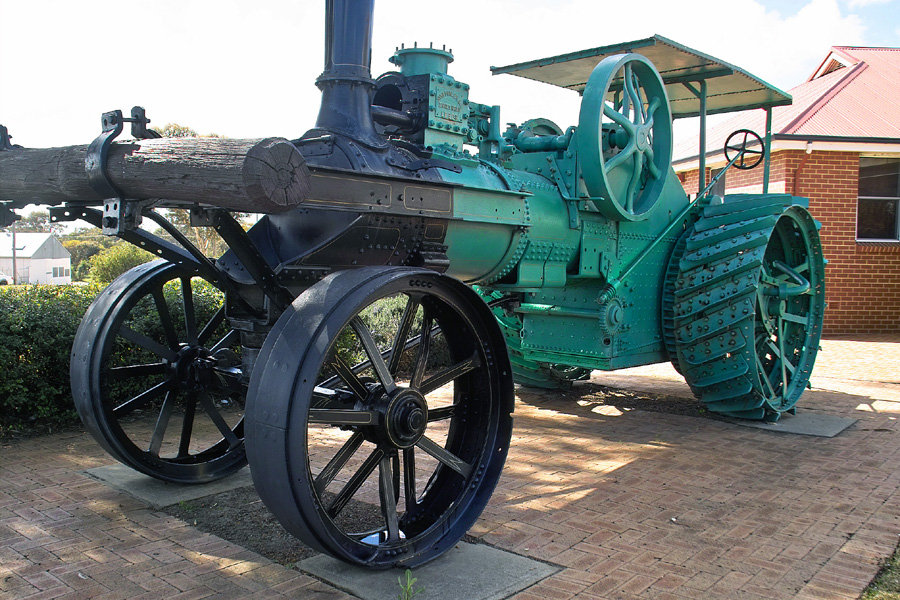
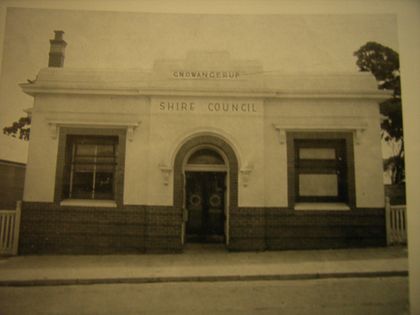
War Memorial Storyboard
Memorial Park est. 1949 (brass plaque)
The Gnowangerup sub-branch of the R.S.L unveiled and dedicated the War Memorial on Anzac Day 1949
Over 60 ex-servicemen marched from the Memorial Hall and 400 residents were present on Anzac Day 1949 for the unveiling service and dedication of the War Memorial. Of marble construction, its design is based on the War Memorial in Kings Park, Perth.
Pearl Marshall recalled..‘Recruitment started in Western Australia on 10th of August and by 24th October it was announced in the Gnowangerup Times that ‘in response to the call for volunteers for the Light Horse 11 local men presented themselves and all passed the military medical tests held by Lieutenant H. Piesse and Dr Pope.. they left by train to go to Blackboy Hill Training Camp and received a hearty send off at the railway station. It is very creditable to the district to be sending such a fine body of men to the war.'
Bink, a Gnowangerup story
R.B Davies was one of Gnowangerup's most loyal businessmen. For years he travelled over bumpy bush tracks in his T model Ford to contact farmers, as agent for Elder Shenton. Many legends exist of the discrete kindnesses performed by Mr and Mrs Davies during their time in Gnowangerup.
Their only son and youngest child, Ally Cecil Clifton Davies, known as 'Bink', was born in the Cottage Hospital on 24th January 1921. As a child he ran errands for his mother up Yougenup street, played cricket and football under the watchful eye of his father, and became school captain when he attended Guilford Grammar. He was a son of whom to be proud, and to R.B he was trumps.
In 1940 he was called up for aircrew training as a fighter pilot. By 1942 he was transferred to New Guinea, stationed at Port Moresby. On the 13th of April he set out on a attack over Lae, and was never to be heard of again. His short life was over. The news shattered his parents.Seven months after he was reported missing his young Brisbane wife gave birth to their daughter (p. 271 Bignell)
Anglican Church est. 1930 (brass plaque)
Local stone was used in the construction of the church which was funded entirely by local business and families. It was consecrated on 17 July 1930 and dedicated to St Margaret of Antioch, reputedly the daughter of a pagan priest of Antioch, who became a Christian and was persecuted for her faith. She was martyred in 306AD and is recognized as the patron saint of women in childbirth.
The first services were conducted by priests who travelled from Katanning until 1952 when the first permanent Rector, Rev. R. J. Cook, was appointed to Gnowangerup.
The first record of an intention to build an Anglican Church is found in the minutes of a meeting from 1913 which states:
'All present were unanimous in their desire that whatever it was decided in the matter of building it should be financed if possible by adherents of the Anglican Church without inflicting on the general public any more than was absolutely necessary. The opinion was freely expressed that although we may be a small community, the pleasure of feeling that we built the Church without outside assistance and that we had not inflicted our wants on those that would not be interested would be worth a great deal of self sacrifice and self denial. The gentlemen present undertook to give ₤2 per quarter with hope of raising a loan.'
However, such good intentions were put on hold when World War I intervened in 1914 and essential goods and services, bank credit and labour became extremely difficult to obtain.
Work began in 1922 when local parishioners formed a Building Committee and began fund raising in earnest. The Government had already granted a block of land as a site for the church but in 1925 the Building Committee negotiated a better block a few blocks away and purchased the adjacent block, deciding that the church should be built across both lots.
The opinion was freely expressed within the church that although they may be a small community, the pleasure of feeling that they built the Church without outside assistance and that they had not inflicted our wants on those that would not be interested would be worth a great deal of self-sacrifice and self-denial. It was always a source of pride that the building was wholly funded from within the community.
Architect Herbert Parry designed the Church. The son of a former Bishop of Perth, he designed many churches and hotels in Western Australia and was also responsible for the design of Gnowangerup’s Agricultural and Memorial Halls. The church is built in the Inter-War Romanesque style and the design is derived from that of English country churches in the shape of a Cross. Other architectural features that are typical of English country churches are the light-coloured stone in the exterior, the arched heads of the windows and doors, the high raking ceiling and internal pitch of the ceiling exposed trusses.
Built of local granitic gneiss rock with a terracotta tiled roof, the church was built by Giovanni Caratti, an Italian stonemason who arrived in Gnowangerup, with his son Michael, in 1929. While building the church he lived on site in a tent and built the church single-handed with assistance only to erect the roof trusses and lay the flooring. The church was completed in 1930 after which Giovanni returned to Italy although his son remained in the district and became a successful businessman with extensive interests in land and earthmoving equipment.
All of the timber used in the construction is jarrah. Over the years various additions have been made, all funded by local parishioners. In 1966, a Parish Hall was constructed adjacent to the church. The money was raised through donations to the Hall Fund including three local farmers who set aside areas of land to be cropped and harvested with all monies raised from the sale of wheat going to the fund.
Wirrina House, Infant Health Centre, C.W.A and Historical Centre
Infant Health Centre
The building at the front of this site is the old Infant Health Centre built in 1954. The women of the community were instrumental in raising funds to get this Centre up and running. An Infant Health Clinic Sister from the Health Dept. visited Gnowangerup on a regular basis to help young mothers in the nurturing of their children, keeping a regular check on their progress. This service had been operating as early as 1929, with Sister Kidd travelling from Katanning and operating the service out of the Ladies Rest Room(formerly the RSL soldiers room) in the Memorial Hall.
After the amalgamation of medical services in Gnowangerup this building stood idle for many years. It became the Historical Centre after lobbying by the community in 2003.
Wirrina House, 'a place to go'
Immediately behind the Infant Health Centre is "WIRRINA HOUSE". Built in 1940 by the Gnowangerup Roads Board it was originally located in the main street approximately where the Yougenup Centre is today, and utilized as a Women's Rest Room and Toilets.
Travelling in the early days to Gnowangerup from outlying districts was much harder than it is today, coming by horse and cart or farm vehicle,families had to endure long journeys over rough dusty tracks or on occasions flooded creek crossings, compounded by the hazard of break downs or flat tyres. On arriving in town toilets and wash facilities were available in the Womens Rest Rooms, and some mothers would spend the day there while the children attended school. It was also used by visitors and train travelers that were passing through to outlying districts.
In 1959 the Roads Board offered the building to the Country Women's Association to be used as a Maternal Health Centre after concerns were voiced by the Jerramungup CWA Branch and the local Doctor (DrA.Winrow), that the distance of travel and mode of transport over the roads of the time were putting lives at risk when babies were due to be born. At the end of WWII, thousands of acres of land were opened up for War Service Farms. For families taking up these farms in Jerramungup, Gairdner River or at the foot of the Stirling Ranges, the doctor in Gnowangerup was hours away over rough bush tracks with the risk of a transport accident.
This building was relocated by 'jinker' and placed behind the CWA rooms in McDonald street. It was named "Wirrina House", meaning "A Place to Go". The Roads Board donated 300 pounds, combined with a grant from the Lotteries Commission alterations and repairs were done to make the building suitable.
In 1966, with the opening of a nursing post at Jerramungup, Wirrina was closed and the CWA then put it to whatever need was in demand, such as homeless or deserted women and children.
In 2002 a repair or demolish order was placed on the building and it was left to fall into a state of disrepair. A outside interest was shown in the building, aiming to move it out of Gnowangerup, however,a member of the Gnowangerup Heritage Group wished to see it stay in Gnowangerup and purchased the building, and with suitable funding it was relocated to its present site in 2009.
Both buildings have enormous heritage value as they are strongly linked with the Pioneer Women, and their children, who were born in the district.
WIRRINA, A BLESSING
"We were pleased to receive your circular re: your new home for expectant mothers. As pioneers of a settlement, most of us can recall times when such places within reach would have been a blessing, and we are glad to think that women from some of the new settlements will have this amenity".
In the next six or seven years this little cottage or flat sheltered mothers from distant places while they waited for their babies to be born. At one time three women were all waiting at one time and a extra bed had to be squeezed in to accommodate the third patient. Bur by all means, what those three "ladies in waiting" got up to, aided and abetted by theirfriends, made the waiting time almost hilarious.
The Country Women's Association
Gnowangerup's CWA Branch was first formed in June 1930, with the aim of improving conditionsand making life better for all countrywomen, childrenand their families, especially those living in rural andremote areas. By1932 they had forty members, and for the first ten years meetings were held in the RSL rooms. During the Great Depression, many members arrived by horse and cart, as vehicles and fuel were unobtainable to the average settler. Despite the hardships of the times the members managed to support each other and local families, and raised funds for many appeals and charities.
On the 17th December1953, building of the CWA Room was complete and on the 19th December a Christmas party was held for all those involved. Later, "Wirrina house" was furnished, kept neat and tidy, and members living in town were on call around the clock to transport mothers in labour from "Wirrina" to hospital, this often involved the menfolk as transport drivers.
As the years progressed, and with membership down to five, a special meeting was held on the 18th December 2011 and a unanimous decision was made to close the branch in Gnangerup. The CWA members, who were the pioneer women of Gnowangerup, contributed greatly to the early settlement of the town and raised funds for many organizations, our town would not be what it is today without their hard work.
4 Park Rd, Gnowangerup WA 6335, Australia
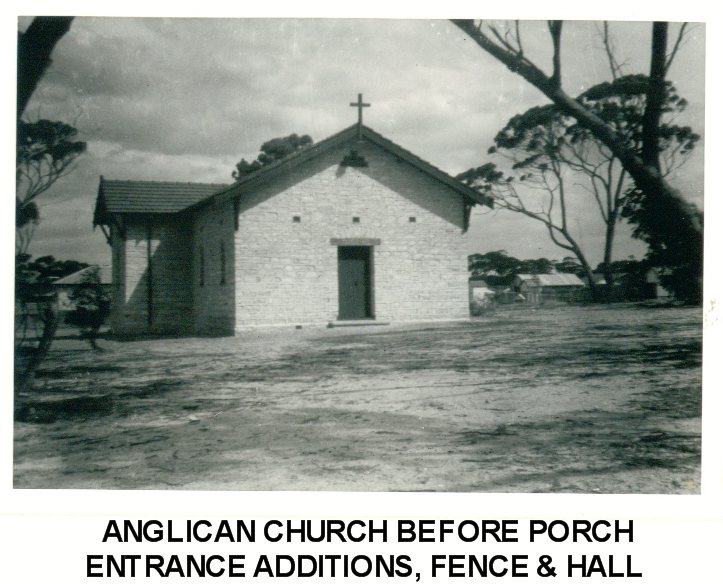
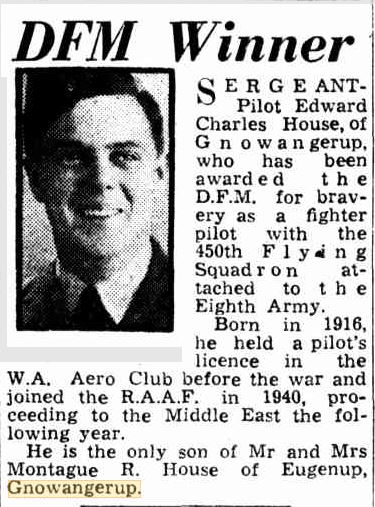
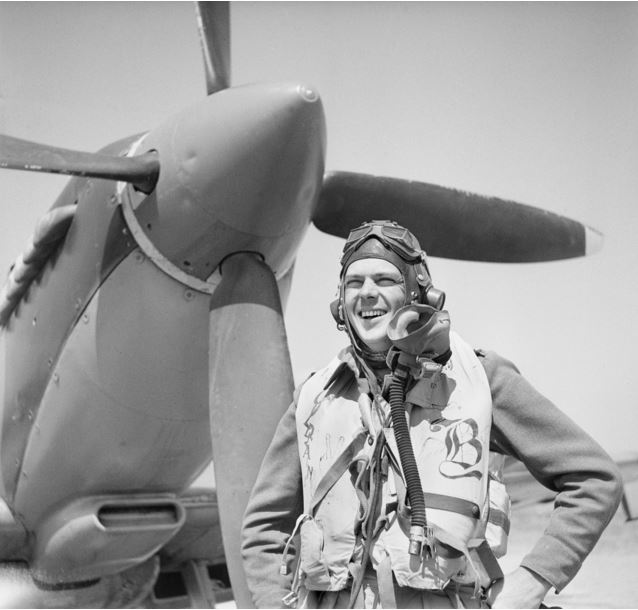

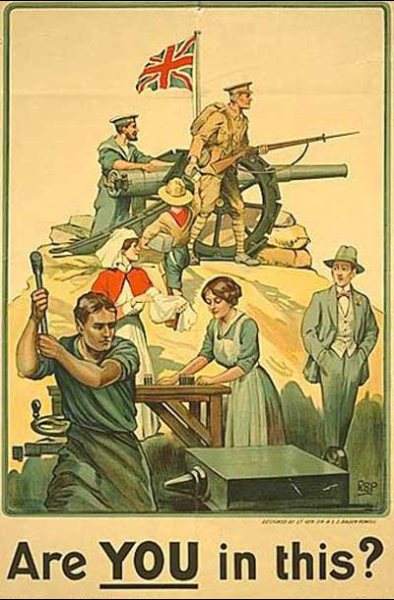
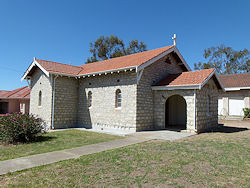
Gnowangerup Star Storyboard
Gnowangerup Star Offices est. 1915 (storyboard)
The Gnowangerup Star was established by Augustine Walker in 1915. The first issue of the newspaper was published on 21 August and selling for the equivalent of two cents, about half the price of a loaf of bread at the time. From then until 2003, the newspaper was produced here and remained in the Walker family, later being operated by Augustus’ son Zic and his wife Margaret, assisted by sons Rod and Bill, the third generation.
Turning out a weekly ten-page newspaper and selling around 1,000 copies per week, the Gnowangerup Star was one of the oldest family owned newspapers in Australia to be produced by the hot metal printing method - 1930 Linotype and flatbed press, up until its closure in 2003.
Augustine Walker had come west with his older brother, from Bordertown in South Australia. They travelled overland by the method known as ‘swamping’, that is, by throwing their swags onto a wagon and walking behind. In return for having their belongings carried they fed the horses at night. Soon after Augustine Walker arrived in Western Australia he was apprenticed to a printer in Norseman. After learning the trade he moved to Greenbushes, then a thriving tin mining town, and worked on the local paper. From there he worked at the Narrogin Observer. Augustus was then invited by both the Gnowangerup and Ravensthorpe communities to start local newspapers for their newly settled districts. He chose Gnowangerup and opened his newspaper in what is believed to be Leonard Tallents old butcher’s shop, with amachine that is said to have printed the first newspaper in the town of York. It was a Hopkinson and Copes No 5349,built in1872.
Zic Walker began his apprenticeship at the Star in 1931 and set all of the type by hand. It was not until 1956 that the newspaper acquired linotype machinery, bought second-hand from the Government Printing Works in Perth. The Gnowangerup Star press printed more than newspapers and provided the local community with a printing service for such things as receipt books, agricultural show programmes, catalogues, ball tickets, advertisements and stationary.
The Walkers refused to print court stories which they believed were gossip and scandal, and firmly believed the role of the newspaper was to inform and educate.‘Our columns will at all times be open for the use of those who have anything to say in the public welfare, or have a personal grievance against the body politic requiring a remedy. We provide the means by which the wider public can be reached and those who desire can avail themselves of the opportunity provided.’
National Australia Bank est. 1913
The National Bank began operating in Gnowangerup in 1910, but not on this site. Thisbuilding constructed of iron and timber was opened here in 1913 complete with a manager's residence at the rear, where the bank manager and his family lived until the early 1950s. Architect E.SPorter made extensive brick additions in 1927, re-modelling the building to what you see today. The first bank manager- Mr R. A. Hughes lived for many months in a tent and had as an office a small wooden structure. Each night the manager had to sleep with the branch takings under their pillows, as they had no safe place to store it!' (pg.100 Pearl Marshall)
Pearl Marshall alsorecalled a humorous story -‘the bank was run by Mr Hughes and Mr Henderson. The latter gentleman had a rather funny experience (though he didn’t think it was humorous at the time). After a rather hectic New Years Eve party he awoke to find himself on the roof of the bank, complete with mattress and blankets!'
37 Yougenup Rd, Gnowangerup WA 6335, Australia
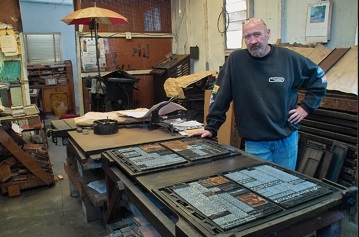
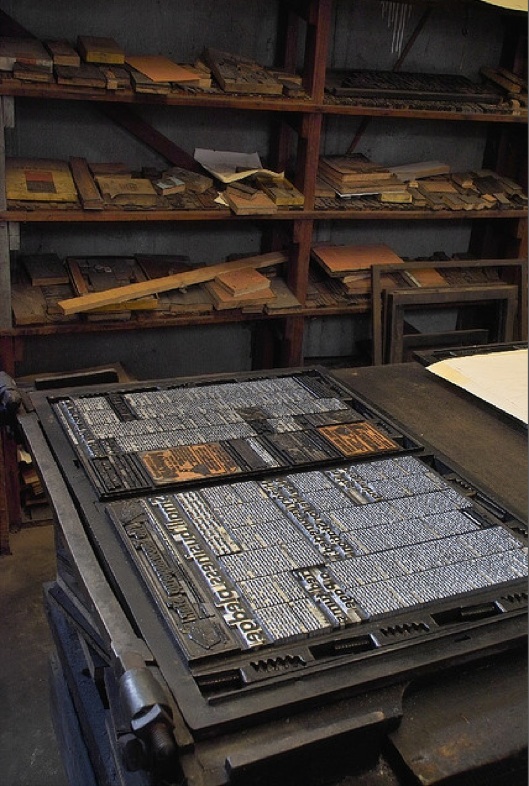
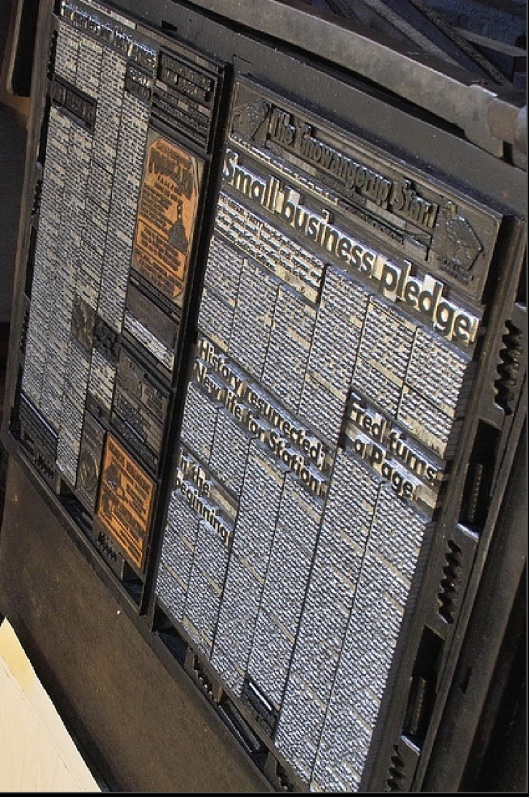
Hotel Storyboard
Gnowangerup Hotel est. 1912 (storyboard)
Prior to the building of the railway line, Gnowangerup was known as “the dry place” because of its lack of accommodation or refreshment facilities. The influx of railway workers building the railway line changed that and precipitated the building of the hotel and various boarding houses in town.300,000 local bricks, manufactured by local building contractor, Messrs George Parker and Sons, were used to build the hotel which cost ₤5,000 to build and furnish. The wood and iron for the construction were brought to Gnowangerup from Broomehill by horse and wagon. The first publican was Robert (Bobby) Norris.
Information compiled by Peter Callaghan for the Gnowangerup Heritage Group:
This story was told to me by Michael Francis Moran in 1989.
'As a toddler in the late 1930’s Mike had lived in the Gnowangerup Hotel when his parents were the Licensee’s. Father and the oldest brothers ran the bars while Mother and two daughters ran the kitchen, dining room and upstairs.
Stores for the Hotel came by the evening train once each week and were delivered to the rail siding a short half kilometer from the Hotel. While the off -loading of goods was underway passengers would also alight and those staying would walk to the pub either for a drink and a meal or to stay the night. The task of collecting the Hotels provisions was given to Michael’s sisters who would have the horse already hitched to the dray. Although a common enough practice this also meant taking staff from the kitchen and dining room just as guests were arriving. After some time putting up with this, Michael’s mother approached the engine driver with a proposition. If, after passengers and other goods were unloaded, could the train be brought further up the tracks and stopped at the rear of the hotel? If so, in return for a hot meal and a jug of beer for each of the crew, would they unload her freight for her? It seems this was considered a fair offer because for as long as the Moran’s ran the Gnowangerup Hotel, the train to Ongerup made two stops in Gnowangerup, first at the Station and then at the Hotel.'
7 Allardyce St, Gnowangerup WA 6335, Australia
